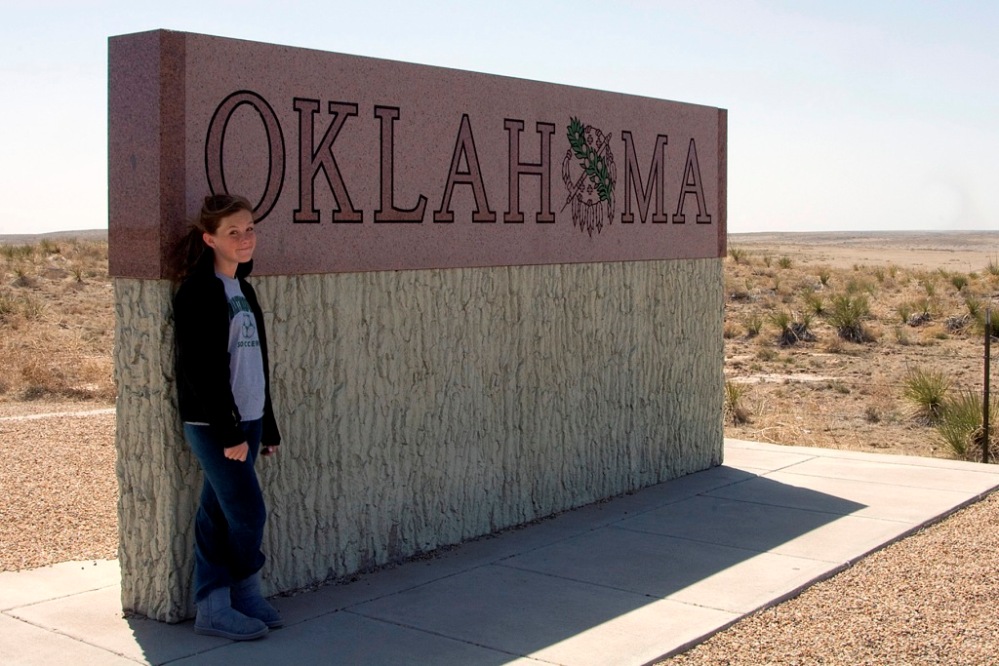The highest point in Oklahoma, Black Mesa, is 1,517 m (4,975 ft) above sea-level.
This area is found in the extreme western part of the state’s Panhandle, and is named for the dark pumice found all over the terrain. When this area was volcanically active, lava flows, cones and domes all worked in concert to shape the landscape that can be seen today. The main draw to the area is nearby Capulin Volcano in New Mexico, which spewed forth the lava flow that created Black Mesa. Igneous rocks, the type associated with all volcanism, are much more durable and erosion-resistant than the sedimentary rocks that they overlay; thus, the borders of the lava flow form a sort of cap that prevents the rock beneath them from being eroded as quickly as the rock immediately next to the flow’s boundary. This type of process is what formed Black Mesa, OK, as well as many of the features in northeast New Mexico.
Black Mesa’s true summit does not lie in Oklahoma, as the slope gradually in elevation across New Mexico and Colorado. The USGS lists the highest point in Colorado at an elevation of 5,715′, however, this point flows directly up to the Mesa de Maya also in Colorado. The highest point of Mesa de Maya, also known as the Corona, is 6,840+’ in Las Animas County, Colorado.


















